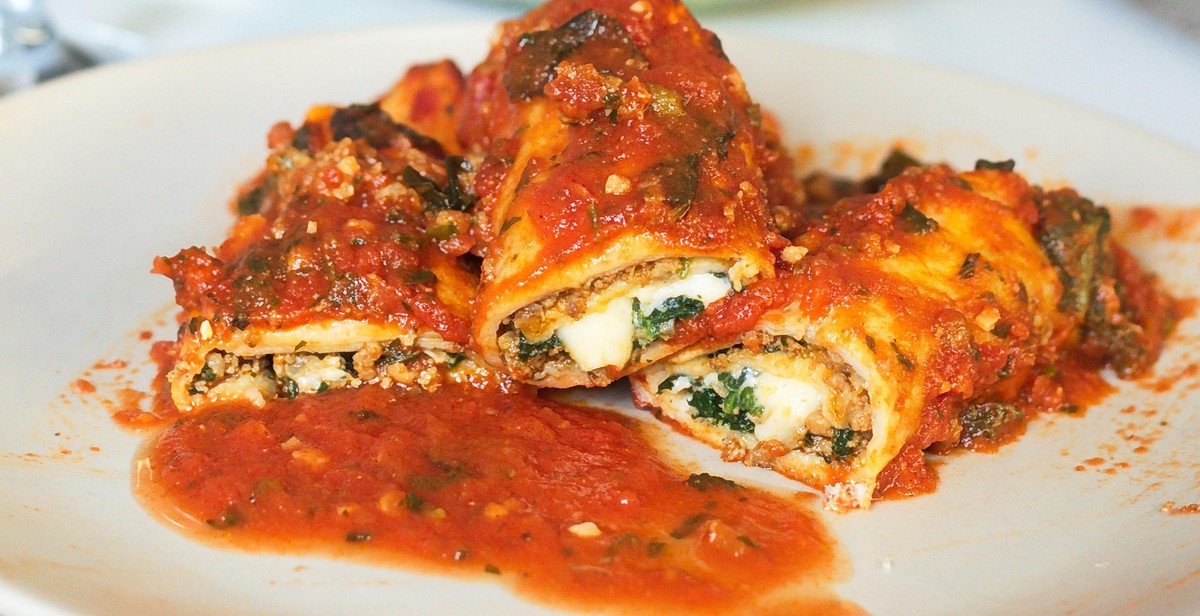How to Appreciate and Identify Different Types of Italian Wine
Italy is home to some of the world’s most famous and delicious wines. From the sparkling wines of Prosecco to the bold reds of Chianti, Italian wine has something to offer every palate. However, with so many different types of Italian wine available, it can be challenging to know where to start when it comes to appreciating and identifying them.
Understanding Italian Wine Regions
One of the first steps in appreciating and identifying Italian wine is to understand the different wine regions of Italy. Italy has 20 wine regions, each with its unique climate, soil, and grape varieties. Some of the most famous wine regions in Italy include Tuscany, Piedmont, Veneto, and Sicily.
Identifying Italian Wine Labels
Another essential aspect of appreciating and identifying Italian wine is understanding the labels. Italian wine labels can be confusing, with unfamiliar words and phrases. However, once you understand the labeling system, it becomes much easier to identify the wine’s origin, quality, and grape variety.
Tasting Italian Wine
Finally, to appreciate Italian wine fully, you need to know how to taste it properly. Tasting wine involves using all your senses, from sight and smell to taste and touch. By understanding the different flavors and aromas of Italian wine, you can better appreciate its complexity and depth.
In this article, we will explore the different types of Italian wine and provide tips on how to appreciate and identify them. Whether you are a wine enthusiast or a novice, this guide will help you discover the rich and diverse world of Italian wine.

History of Italian Wine
Italy is one of the oldest wine-producing countries in the world, with a history that dates back to at least 800 BC. The country has a diverse range of climates and soils, which has allowed for the cultivation of many different grape varieties and the production of a wide range of wines.
The Origins of Italian Wine
The Etruscans, who lived in central Italy between the 8th and 3rd centuries BC, were among the first to cultivate grapes and make wine in Italy. They were followed by the Greeks, who established trading colonies in southern Italy and Sicily and introduced new grape varieties to the region.
The Romans also played a significant role in the development of Italian wine. They expanded the cultivation of grapes throughout the Italian peninsula and were the first to introduce large-scale wine production techniques, such as the use of wooden barrels for aging wine. Many of the grape varieties still used in Italian wine production today have their origins in ancient Rome.
The Roman Influence on Italian Wine
The Roman Empire greatly expanded the production and consumption of wine throughout Europe, including Italy. The Romans recognized the potential of Italian wine and established vineyards in many parts of the country, including the regions of Tuscany, Piedmont, and Lombardy. They also established trade routes for Italian wine, which helped to spread its popularity throughout the empire.
The Romans were also responsible for developing many of the wine-making techniques still used in Italy today. They were the first to use wooden barrels for aging wine, which allowed for longer storage and improved flavor. They also developed techniques for pruning vines and controlling pests, which helped to improve grape yields and wine quality.
The Influence of Christianity on Italian Wine
Christianity had a significant impact on Italian wine production. The Catholic Church played a major role in the development of wine-making techniques and the cultivation of grapes throughout Italy. Monks and priests were responsible for many of the vineyards in Italy, and they developed new techniques for wine-making and grape cultivation.
The Catholic Church also established many of the wine regions in Italy, including Chianti and Barolo. These regions were established to ensure that the wine produced in Italy met certain quality standards and to protect the reputation of Italian wine. Today, these regions are still recognized for their high-quality wines and are among the most popular wine regions in Italy.
| The Origins of Italian Wine | The Roman Influence on Italian Wine | The Influence of Christianity on Italian Wine |
|---|---|---|
| The Etruscans were the first to cultivate grapes and make wine in Italy. | The Romans expanded the cultivation of grapes throughout Italy and established large-scale wine production techniques. | The Catholic Church played a major role in the development of wine-making techniques and the cultivation of grapes throughout Italy. |
| The Greeks introduced new grape varieties to the region. | The Romans were responsible for developing many of the wine-making techniques still used in Italy today. | The Catholic Church established many of the wine regions in Italy, including Chianti and Barolo. |

Types of Italian Wine
Italy is one of the most famous wine-producing countries in the world with a long history of wine-making. Italian wines are known for their quality, variety, and unique taste. There are different types of Italian wines, each with its own characteristics and flavors. In this article, we will explore the most popular types of Italian wine.
Red Wines
Red wines are the most popular type of Italian wine. They are made from red grapes and are known for their rich and complex flavors. Some of the most famous red wines in Italy include:
- Chianti: A dry red wine made from Sangiovese grapes, which is the most famous wine produced in Tuscany.
- Barolo: A full-bodied wine made from Nebbiolo grapes, which is produced in the Piedmont region.
- Amarone: A rich and full-bodied wine made from dried grapes, which is produced in the Veneto region.
White Wines
White wines are less popular than red wines in Italy, but they are still an important part of Italian wine culture. They are made from white grapes and are known for their light and crisp flavors. Some of the most famous white wines in Italy include:
- Pinot Grigio: A dry white wine made from Pinot Grigio grapes, which is produced in the Veneto and Friuli regions.
- Vermentino: A light and refreshing white wine made from Vermentino grapes, which is produced in Sardinia and Liguria.
- Fiano: A full-bodied white wine made from Fiano grapes, which is produced in Campania.
Rosé Wines
Rosé wines are becoming increasingly popular in Italy. They are made from a combination of red and white grapes and are known for their light and fruity flavors. Some of the most famous rosé wines in Italy include:
- Bardolino Chiaretto: A dry rosé wine made from Corvina, Rondinella, and Molinara grapes, which is produced in the Veneto region.
- Cerasuolo d’Abruzzo: A light and refreshing rosé wine made from Montepulciano grapes, which is produced in the Abruzzo region.
- Schiava: A fruity and aromatic rosé wine made from Schiava grapes, which is produced in the Trentino-Alto Adige region.
Sparkling Wines
Sparkling wines are popular in Italy and are often served during celebrations and special occasions. They are made using the traditional method, which involves a secondary fermentation in the bottle. Some of the most famous sparkling wines in Italy include:
- Prosecco: A light and fruity sparkling wine made from Glera grapes, which is produced in the Veneto region.
- Asti: A sweet and fruity sparkling wine made from Moscato grapes, which is produced in the Piedmont region.
- Trento DOC: A dry and complex sparkling wine made from Chardonnay and Pinot Noir grapes, which is produced in the Trentino-Alto Adige region.
Dessert Wines
Dessert wines are sweet wines that are often served with dessert or as a dessert on their own. They are made from late-harvested grapes or grapes affected by noble rot. Some of the most famous dessert wines in Italy include:
- Moscato d’Asti: A sweet and refreshing dessert wine made from Moscato grapes, which is produced in the Piedmont region.
- Panettone Moscato: A sweet and aromatic dessert wine made from Moscato grapes, which is produced in the Lombardy region.
- Vinsanto: A rich and full-bodied dessert wine made from Trebbiano and Malvasia grapes, which is produced in Tuscany.

Appreciating Italian Wine
Appreciating Italian wine involves using all of your senses to fully experience the wine. The sight, smell, and taste of the wine can provide clues about its origin, grape variety, and age. Additionally, pairing Italian wine with food can enhance the flavors and aromas of both the wine and the dish.
Sight
The first step in appreciating Italian wine is to examine its appearance. Hold the glass up to the light and observe the color and clarity of the wine. Italian red wines can range in color from deep purple to brick red, while white wines can range from pale yellow to golden. The intensity of the color can also provide clues about the age and grape variety of the wine.
Smell
Next, swirl the wine in the glass to release its aromas. Take a deep sniff and try to identify any scents. Italian red wines can have aromas of dark fruit, such as blackberry and cherry, as well as earthy notes such as leather and tobacco. White wines can have aromas of citrus, tropical fruit, and flowers.
Taste
Finally, take a sip of the wine and let it linger in your mouth. Pay attention to the flavors and textures of the wine. Italian red wines can have flavors of red and black fruit, as well as spices and herbs. White wines can have flavors of citrus, stone fruit, and minerality. The texture of the wine can also vary, from light and crisp to full-bodied and tannic.
Pairing Italian Wine with Food
Pairing Italian wine with food can enhance the flavors and aromas of both the wine and the dish. Italian red wines, such as Chianti and Barolo, pair well with hearty dishes such as pasta with meat sauce and grilled meats. White wines, such as Pinot Grigio and Vermentino, pair well with seafood and light pasta dishes. Additionally, Italian sparkling wine, such as Prosecco, can be a refreshing aperitif or paired with appetizers such as bruschetta and seafood salads.
| Italian Red Wines | Italian White Wines |
|---|---|
| Chianti | Pinot Grigio |
| Barolo | Vermentino |
| Brunello di Montalcino | Gavi |
| Amarone della Valpolicella | Fiano di Avellino |
By utilizing all of your senses and pairing Italian wine with the right food, you can fully appreciate and enjoy the unique flavors and aromas of Italian wine.

Identifying Italian Wine
Italian wine is known for its diverse range of flavors and styles, making it a popular choice among wine enthusiasts. However, identifying Italian wine can be a daunting task, especially for those who are new to the world of wine. Here are some tips to help you identify and appreciate different types of Italian wine.
Reading Italian Wine Labels
Italian wine labels can be confusing, but they provide valuable information about the wine’s origin, grape variety, and production methods. Look for the wine’s name, vintage, and classification. The label will also indicate the wine’s alcohol content and the producer’s name and address.
Understanding Italian Wine Classifications
Italy has a complex wine classification system that categorizes wine based on its origin, grape variety, and production methods. The four main categories are:
- DOC (Denominazione di Origine Controllata): These wines come from a specific region and are made using traditional production methods.
- DOCG (Denominazione di Origine Controllata e Garantita): These wines are the highest quality and come from a specific region. They are subject to strict production regulations.
- IGT (Indicazione Geografica Tipica): These wines are made from grapes grown in a specific region and must meet certain production standards.
- Vino da Tavola: These wines are the most basic and can come from any region in Italy. They have no specific production standards.
Identifying Italian Wine Regions
Italy has 20 wine regions, each with its own unique wine styles and grape varieties. Some of the most popular regions include:
| Region | Wine Styles |
|---|---|
| Piedmont | Barolo, Barbaresco, Barbera |
| Tuscany | Chianti, Brunello di Montalcino, Vino Nobile di Montepulciano |
| Veneto | Prosecco, Amarone, Valpolicella |
Finding the Best Italian Wine
The best Italian wine is subjective and depends on personal taste preferences. However, some tips for finding high-quality Italian wine include:
- Research the producer and read reviews from other wine enthusiasts.
- Look for wines with DOCG or DOC classifications.
- Try wines from lesser-known regions for unique and interesting flavors.
- Experiment with different grape varieties to find your favorite.
